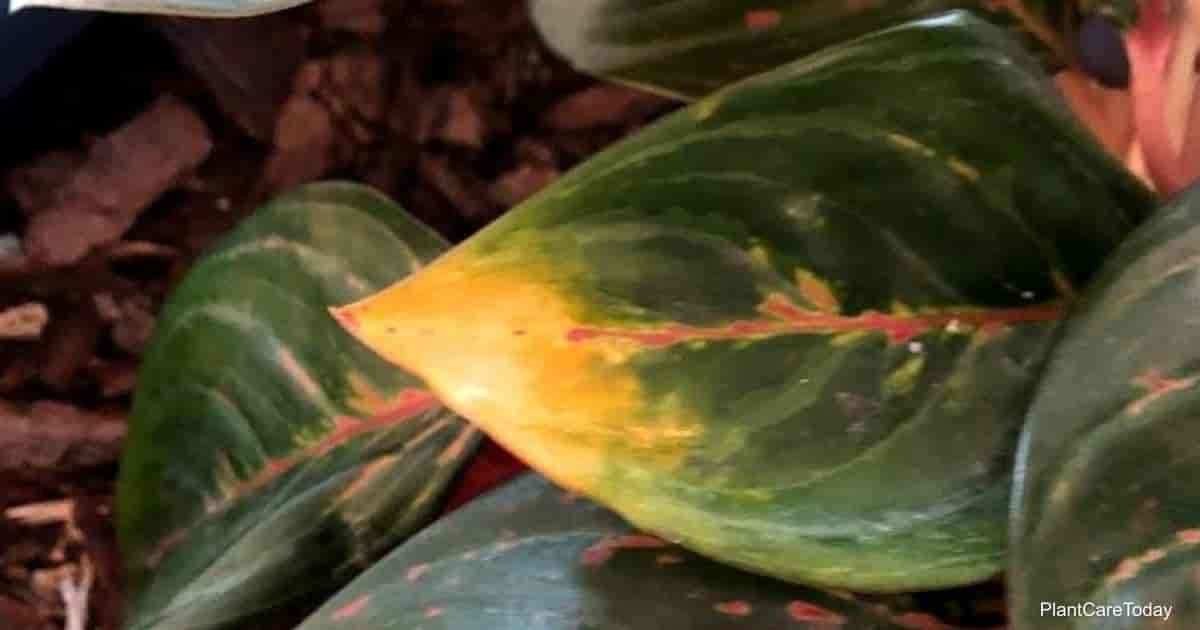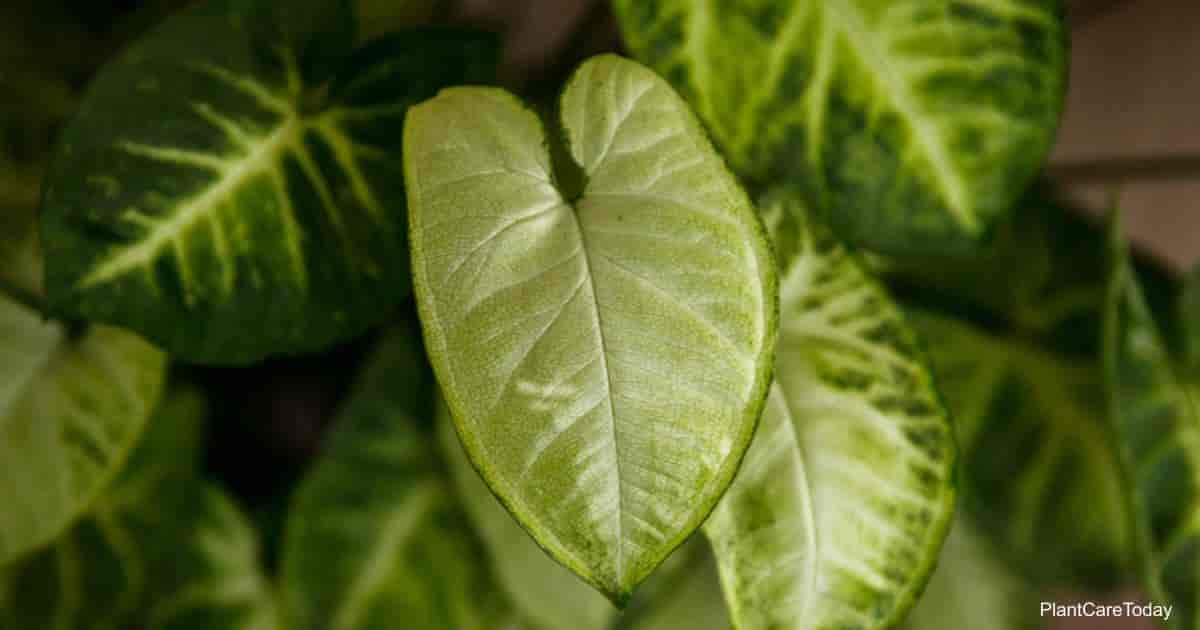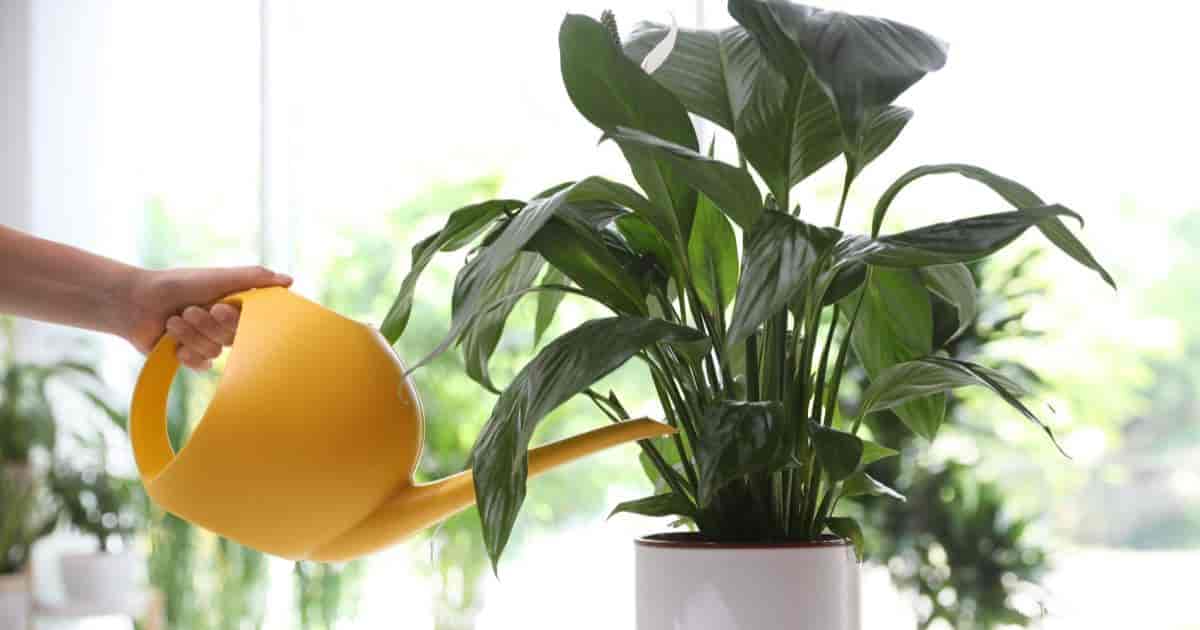The Araceae (or arum) family has given us an incredible array of plants, not the least of which is Aglaonema pictum (ag-lay-oh-NEE-muh PIK-tum, a variegated species that’s more commonly known as the Chinese evergreen.
But one thing you might not know is that Aglaonema pictum has several sports to its name.
One of these cultivars is Aglaonema pictum var. tricolor, a stunning treat with natural camouflage patterns on its leaves.
Much like its Sumatran parent, this plant is very popular among those who’ve discovered its existence.
It has a handful of common names, such as:
- Camouflage plant
- Chinese evergreen tricolor
- Tricolor Chinese evergreen
Due to it being relatively unknown, this plant can be quite expensive, depending on where you live.
However, it’s coming down in price in several countries as more people learn of this unique perennial treasure.
Chinese Evergreen Tricolor Care
Size and Growth
Like its bicolor parent, ‘tricolor’ grows to about 2’ feet tall and has large, ovate leaves.
The difference is in the natural camouflage pattern, consisting of dark green, light green, and white.
This cultivar is a slow grower, making it very easy to care for.
Flowering and Fragrance
While its leaves are the real attraction, your tricolor will produce white spathes in spring and summer.
These spathes are very similar to those of a distant cousin and fellow houseplant, the peace lily.
Light and Warm Temperatures
As with most variegated species, bright, indirect sunlight is the watchword.
Direct sunlight can cause leaf burns to this forest floor dweller.
Conversely, not enough light will cause the leaves to fade.
Keep this indoor plant near a sunny window and separate it with a sheer curtain if you’re worried direct sunlight will hit the leaves.
The higher the ambient humidity, the happier your tricolor will be.
In a terrarium, it will enjoy the humid environment with humidity levels of up to 90% percent.
To keep it healthy in your home, place it in the kitchen or near a humidifier.
You may also choose to place a pebble tray under it and give the leaves an occasional misting.
As this is a subtropical plant, you will need to keep it warm.
Outdoors, it will fare well in USDA hardiness zones 10 to 12.
Indoors, temperatures between 60 and 85° degrees Fahrenheit are best.
Be warned; the plant will suffer if the temperatures drop to 50° degrees Fahrenheit or below.
You will also need to avoid places that have drafts, as A. pictum is protected in nature from wind by taller plants.
Watering and Fertilizer
Your camouflage plant loves evenly moist soil but is very susceptible to root rot.
To prevent this and ensure it always has a good amount of water, use the finger test.
Water the plant using room temperature distilled water or rainwater when the soil is dry to the touch, approximately 2” inches down.
Saturate the soil, then drain off any excess so the water can also flush away harmful minerals such as salts.
Fertilize the plant once in the spring and once in summer using a balanced houseplant fertilizer.
The fertilizer can be liquid or slow-release, but be sure to follow any instructions on the package.
Avoid feeding when the plant is dormant.
Potting Soil and Transplanting
Tricolor thrives in soil that resembles the rainforest floor.
This means loose, well-draining soil works best.
A potting mix for orchids can be an excellent base for your plant’s needs, especially when adding one part perlite per three parts soil to help keep the soil loose and well-drained.
Another option is to mix 3 parts coco coir or peat, 3 parts coarse sand or pumice, and one part compost.
This mix provides good drainage while retaining some water via the coir or peat, and the organic matter provides plenty of nutrition.
Because the Aglaonema Pictum Tricolor cultivar is such a slow grower, you will only need to repot every two years.
This process allows you to provide fresh soil and check for root binding.
The plant doesn’t mind a bit of binding and may never actually outgrow its original pot.
In the event, it does, however, choose a new pot that’s one size larger to prevent the soil from compacting over time.
Grooming and Maintenance
It may seem counterintuitive, but your tricolor Chinese evergreen prefers it if you don’t groom it.
Grooming too close to the crown can nick the sensitive tissue and may even kill the plant.
Likewise, cutting too much at once can leave your plant denuded for a long time due to the slow growth.
Allow dead leaves to fall off naturally or prune only small areas in the event of disease.
You may also choose to deadhead the spathes, which won’t harm the plant and lets it focus its resources elsewhere.
How To Propagate Aglaonema pictum ‘tricolor’?
Propagate Aglaonema Pictum Tricolor by using the same methods as its parent plant.
This mainly includes stem cuttings and division.
While it’s possible to grow new plants using seeds, your tricolor is a cultivar, meaning the seeds may end up producing a regular Chinese evergreen instead of the sport.
Additionally, indoor blooms often fail to produce viable seeds, making this method unlikely for home growers.
Tricolor Chinese Evergreen Pests or Diseases
Despite a slightly higher resistance than other A. pictum varieties, ‘tricolor’ is still highly susceptible to root rot.
It is also known to suffer from leaf spot and powdery mildew.
Tricolor is resistant to damage from infestations but can still be preyed upon by common indoor pests such as aphids, mealybugs, scale, and spider mites.
Be warned; all Araceae family members contain calcium oxalate crystals, which are highly toxic to humans and pets and may cause kidney stones or other serious conditions if ingested.
Suggested Camouflage Plant Uses
Due to its distinct camouflage patterns, this plant makes an excellent gift for fans of hunting.
It is an excellent groundcover in dappled light and makes for an attractive window plant.
Credit : Gary Antosh (https://plantcaretoday.com/aglaonema-pictum-tricolor.html)





